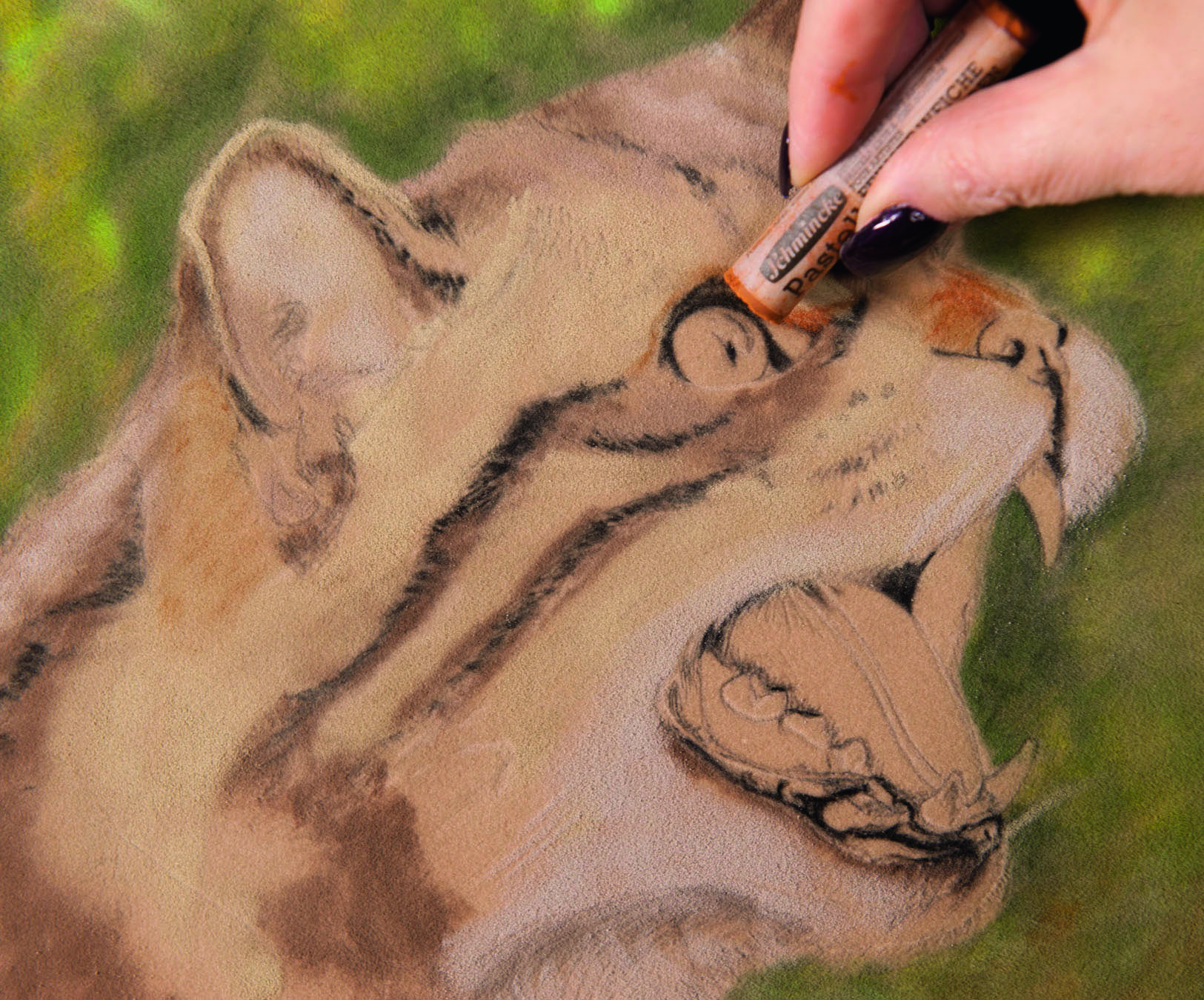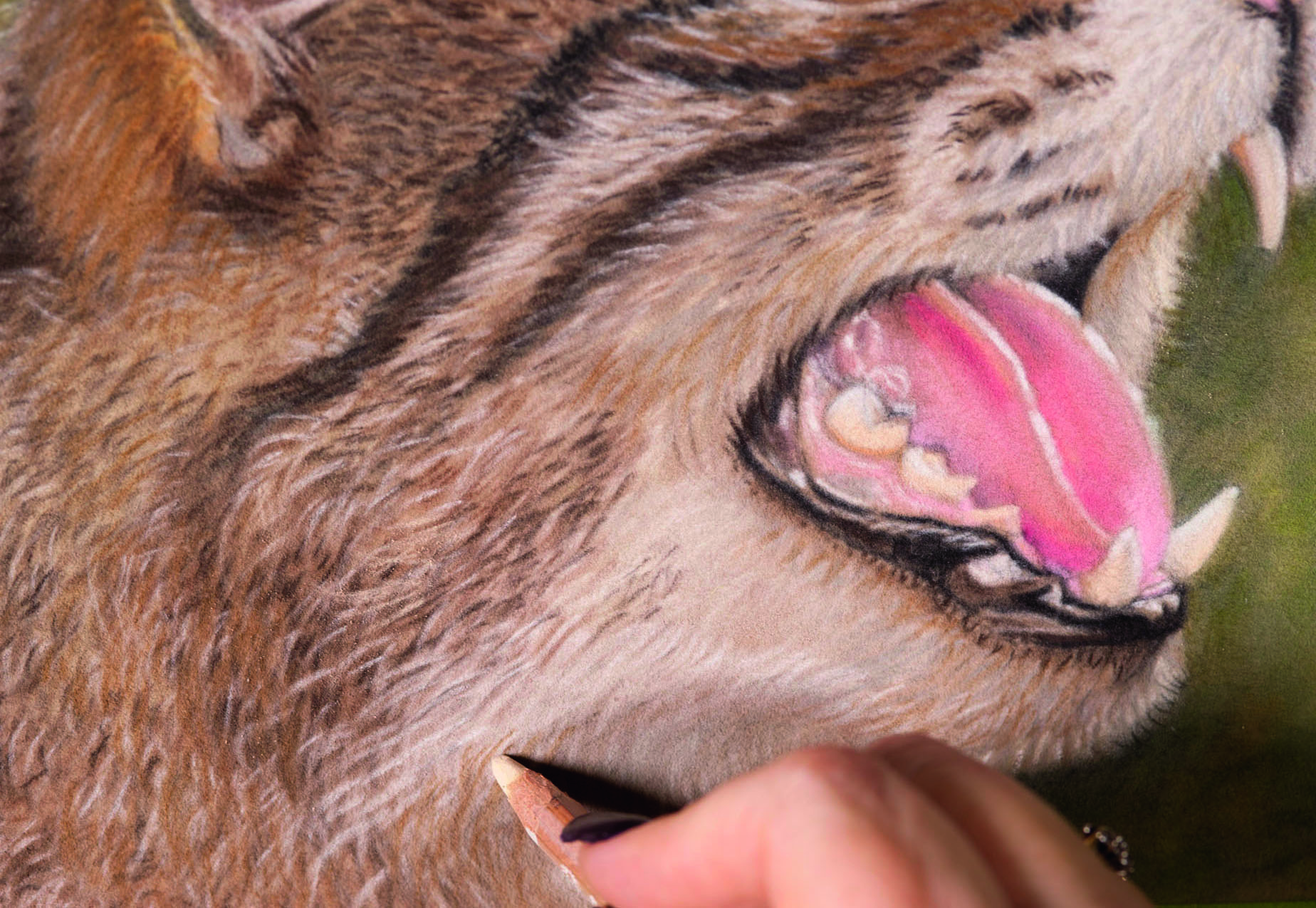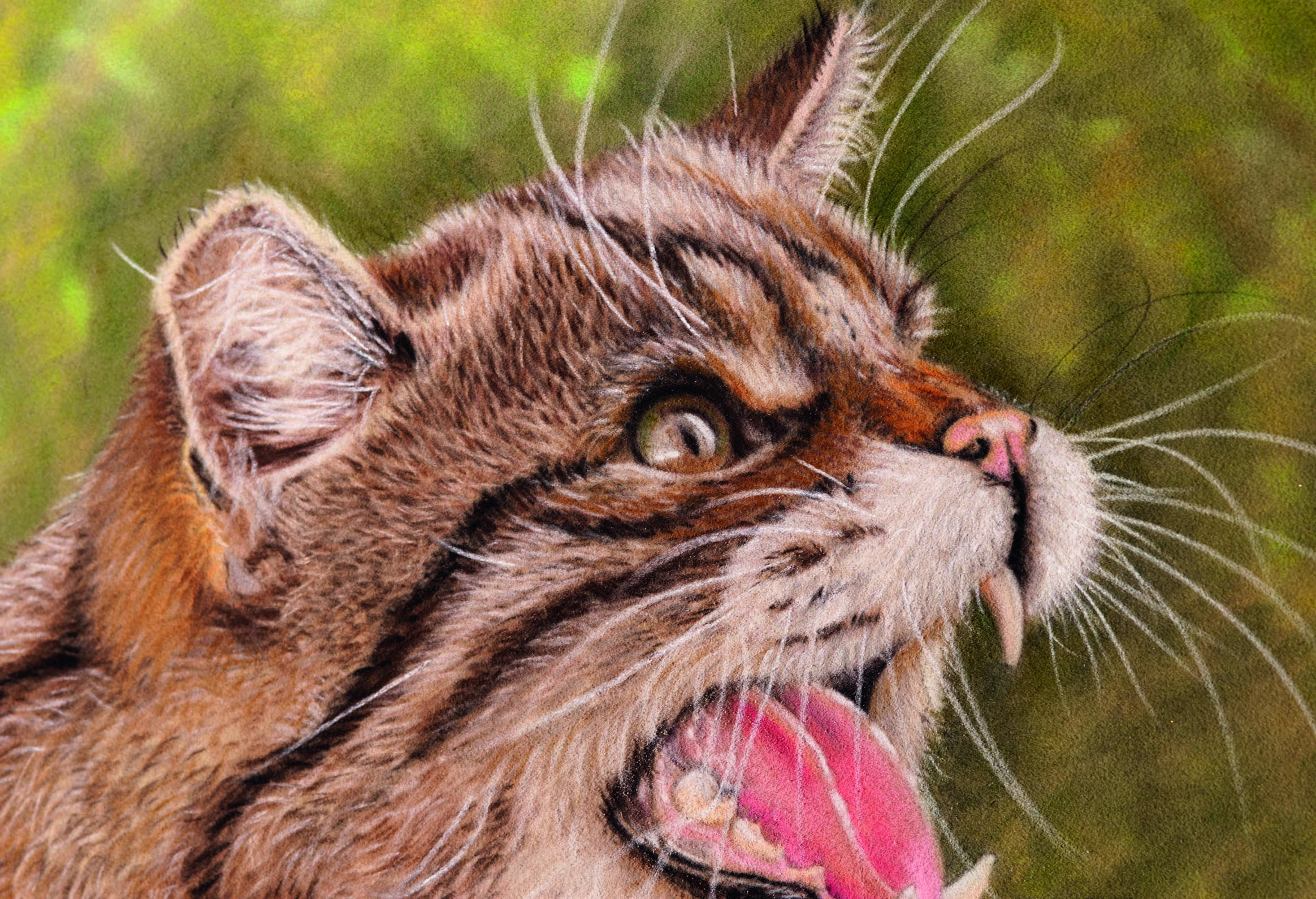How to draw fur in pastels
Create lush, dense hair with this how to draw fur tutorial.

Learning how to draw fur doesn't have to be painful. This feisty little Scottish wildcat is a perfect model for practising fur texture with. Here, I am working with pastels on velour, but the main principles hold true for any type of pastel paper.
I like to use velour for two reasons. First, it takes plenty of layers before it becomes saturated, and second, the soft 'tooth' adds to the final texture that you're trying to achieve. Knowing the make-up of your subject can help too. Scottish wildcats are 'true fur' animals, which means they have a thick downy under-layer designed to keep them warm, and a more wiry outer layer to protect them from rain. Knowing this make-up helps you understand what you’re aiming for.
With the method I’m showing here, the colour and marks are laid down in three distinct layers to help develop the realism and depth. I’ve sketched my image in pencil and added a diffused background, which I have darkened slightly around the cat.
If you need materials to get started, see our best pencils post, or our guide to the best pastel pencils. If you want more tips, see our top how to draw tutorials.
01. Lay down a base

The first step is to block in the main colours in the direction of the fur. I’m using stick pastels for vibrancy and quicker coverage, working from dark to light. Ensure that you stay a tone darker in the lightest areas to give yourself the space to add in highlights later.
02. Develop the definition

In this next layer I swap to pastel pencils to develop definition in the fur. Pay attention to where the fur stands in ridges over underlying bone or lays flat over muscles, and adjust your direction and hair length to suit. Twisting the pencil as you work helps keep it sharp for longer.
03. Defining features

I’ve added the eye and mouth detail so that I can see how the colours work together. Since velour can take many layers, the more layers you add, the better the fur density will look – it’s worth spending time on this part. Although the general direction should be the same, gently criss-crossing the hair marks will make the fur look even more natural.
04. Create fine details

In this final layer, I add the fine details with very sharp pencils. For extremely fine hairs I find a waxy watercolour pencil is best. Adjust the values if you need to, strengthening the darks and lightening the lights, until you are happy with the contrast. The whiskers should be the final thing to add.
This article originally appeared in Paint & Draw. Buy the Animals Paint & Draw bookazine here.
Read more:
- The best art supplies for painting
- The best easels for painting
- How to fix your finished pastel artwork
Get the Creative Bloq Newsletter
Daily design news, reviews, how-tos and more, as picked by the editors.

Thank you for reading 5 articles this month* Join now for unlimited access
Enjoy your first month for just £1 / $1 / €1
*Read 5 free articles per month without a subscription

Join now for unlimited access
Try first month for just £1 / $1 / €1
